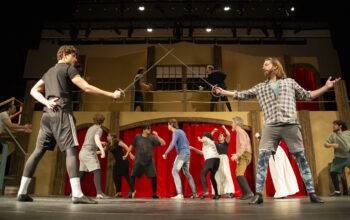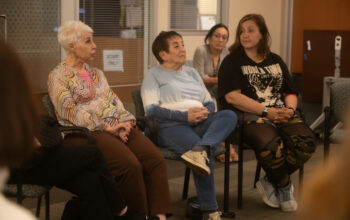Petrina Roudebush / Roundup
How did tattoos emerge from being associated with degenerates and criminals to being a part of mainstream society?
Diversity at Pierce College may contribute to the large variety of tattoo styles seen on campus.
The cultural status of tattooing has gradually become more about the art than the rebellion. Tattoos are one of the oldest and most meaningful forms of art and self expression.
Malcolm Collins, guard for the Pierce basketball team, revealed his tattoo with pride and expressed the personal meaning behind why he chose to get the tattoo.
“[My tattoos are] my Nigerian and African name,” said Collins, 18. “It means ‘The First Son.'”
Tattoos have become a way to express oneself without vocal explanation. But even with the growing subculture of tattoos, there are still many individuals who feel that getting a tattoo is unneeded is against their religious beliefs.
A student who requested to remain unidentified said, “No, I do not have any tattoos. I was raised in an Orthodox family and if I had a tattoo I would not be able to be buried in the family plot.”
Since the 1960s the cultural status of body modification has greatly changed and has become embraced rather than ridiculed.
Graphic design major Ian Goodchild, 18, chose to get his tattoo because of his interest in the main character from the movie Army of Darkness.
According to the article “The Changing Cultural Status of Tattoo Art” on tattooartist.com, tattooing has become the sixth-fastest growing retail business in the United States.
An article by Time Magazine said, “as an art, tattoos have been traced back 4,000 years to the Egyptians, (and in modern times) they have adorned the arms and chests of sailors, roustabouts and construction workers. Now, after a decade or two of decline, tattoos are enjoying a renaissance. They have become the vogue of the counterculture.”

Ian Goodchild, 18, a graphic design major reveals his tattoo of the main character of the Army of Darkness on his calf in front of the Pierce College library March 6, 2009. (Petrina Roudebush / Roundup)



